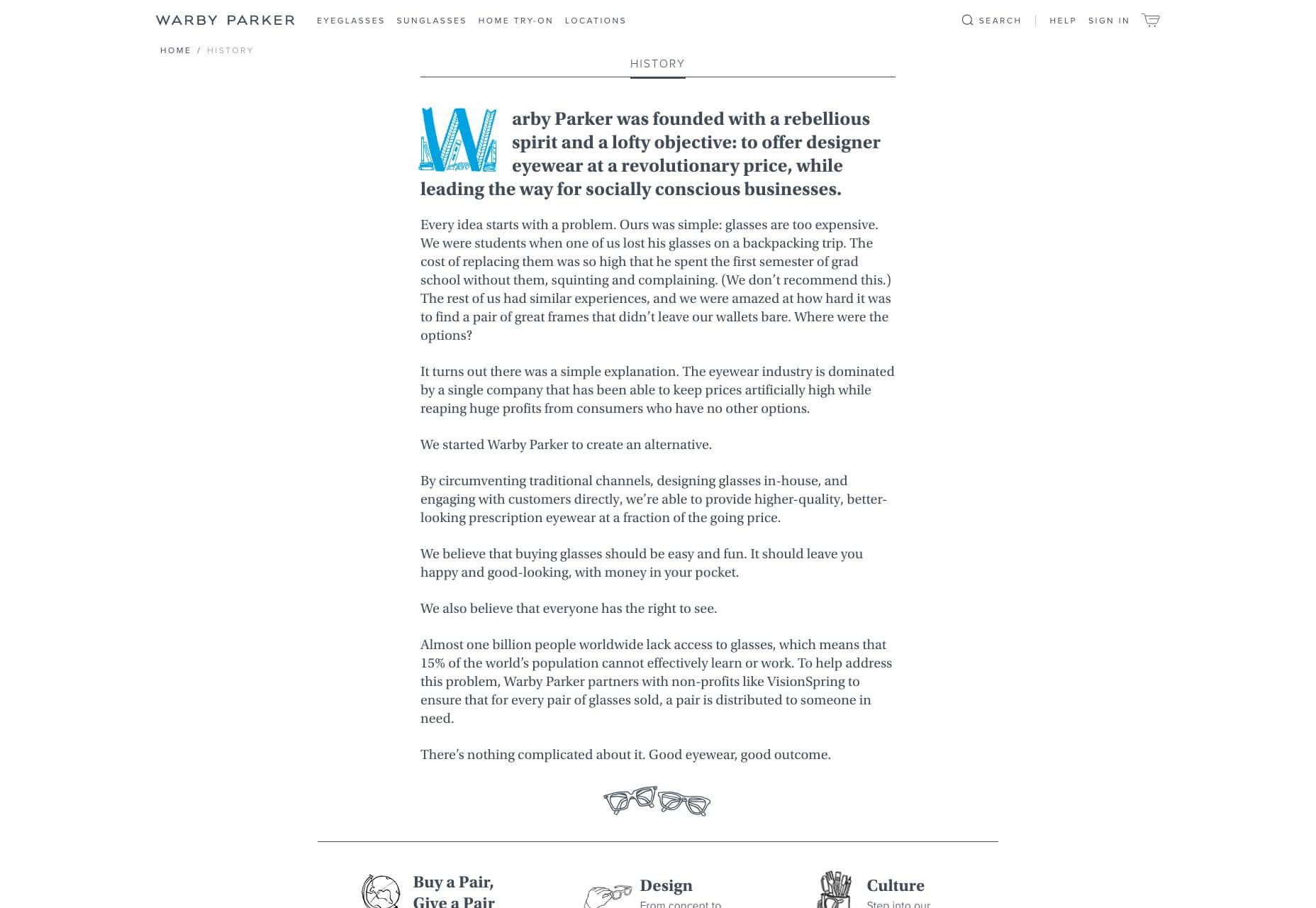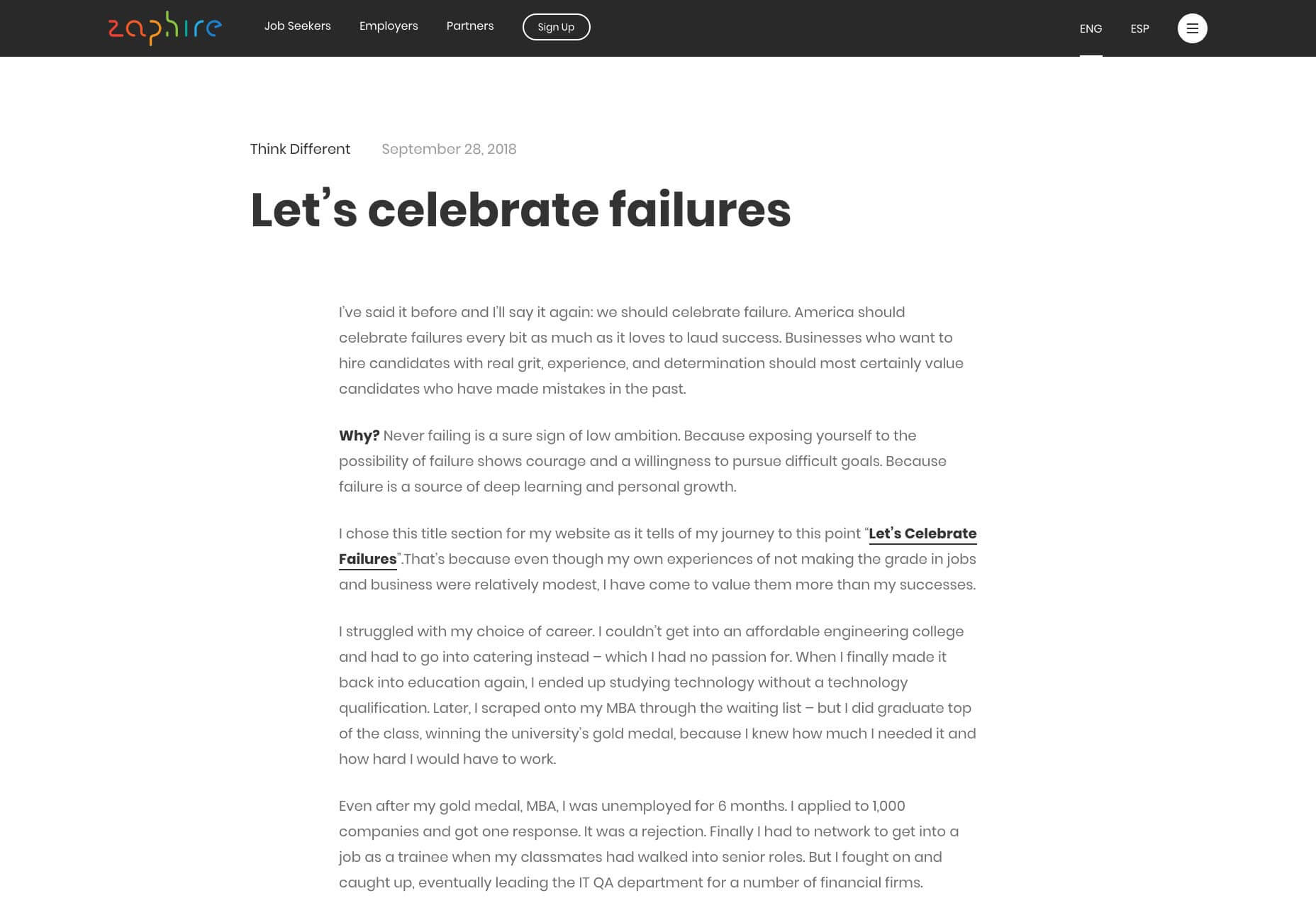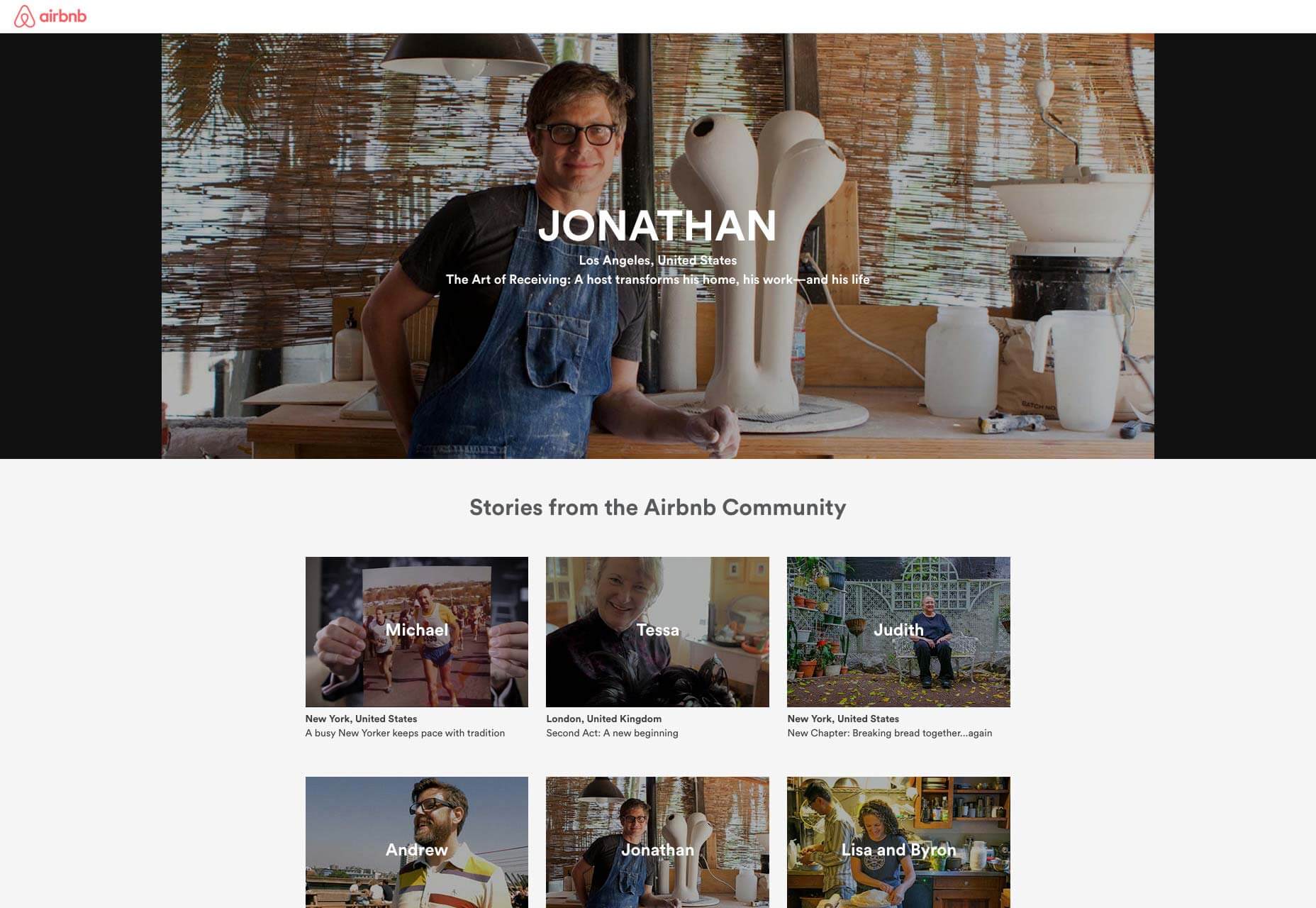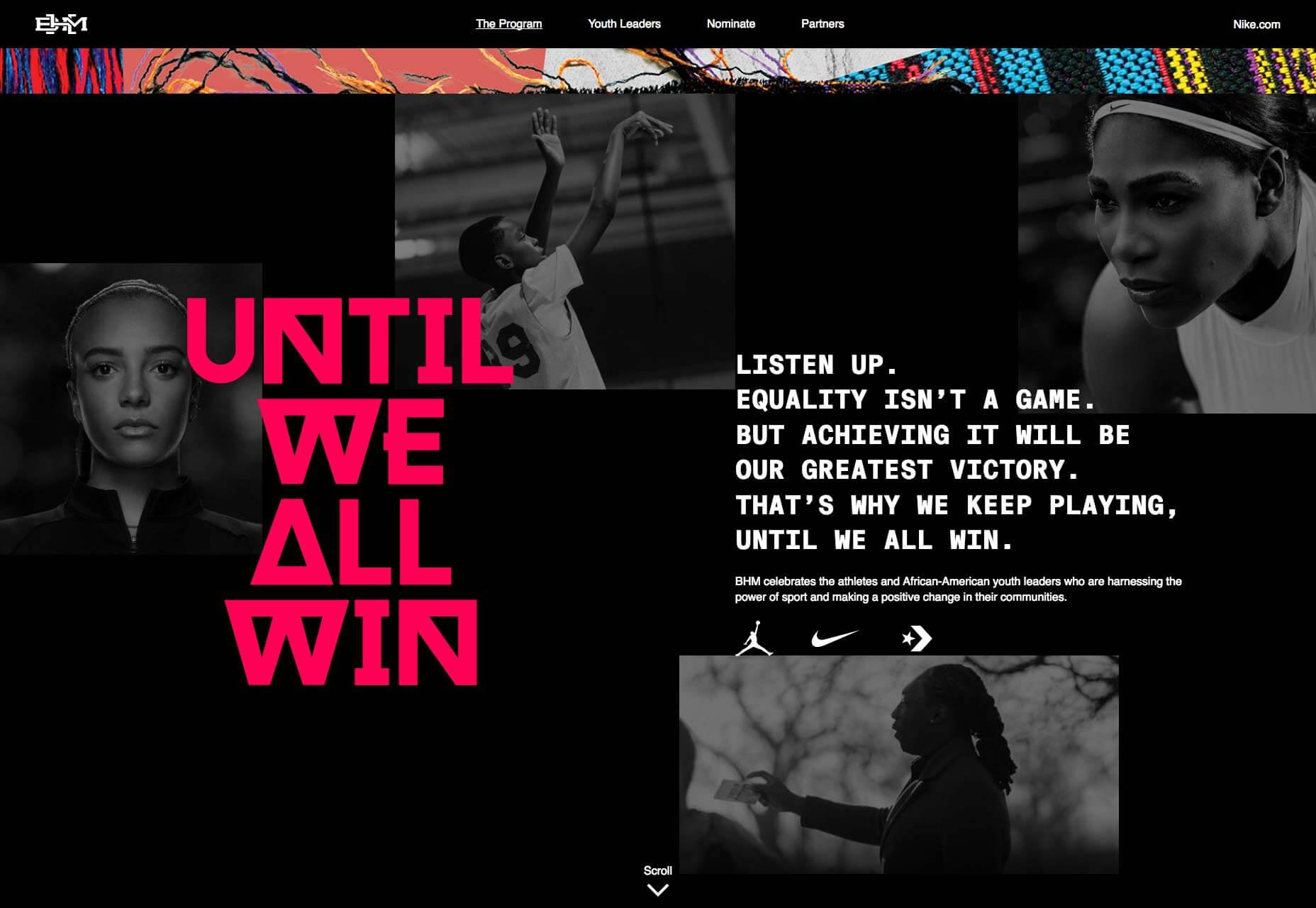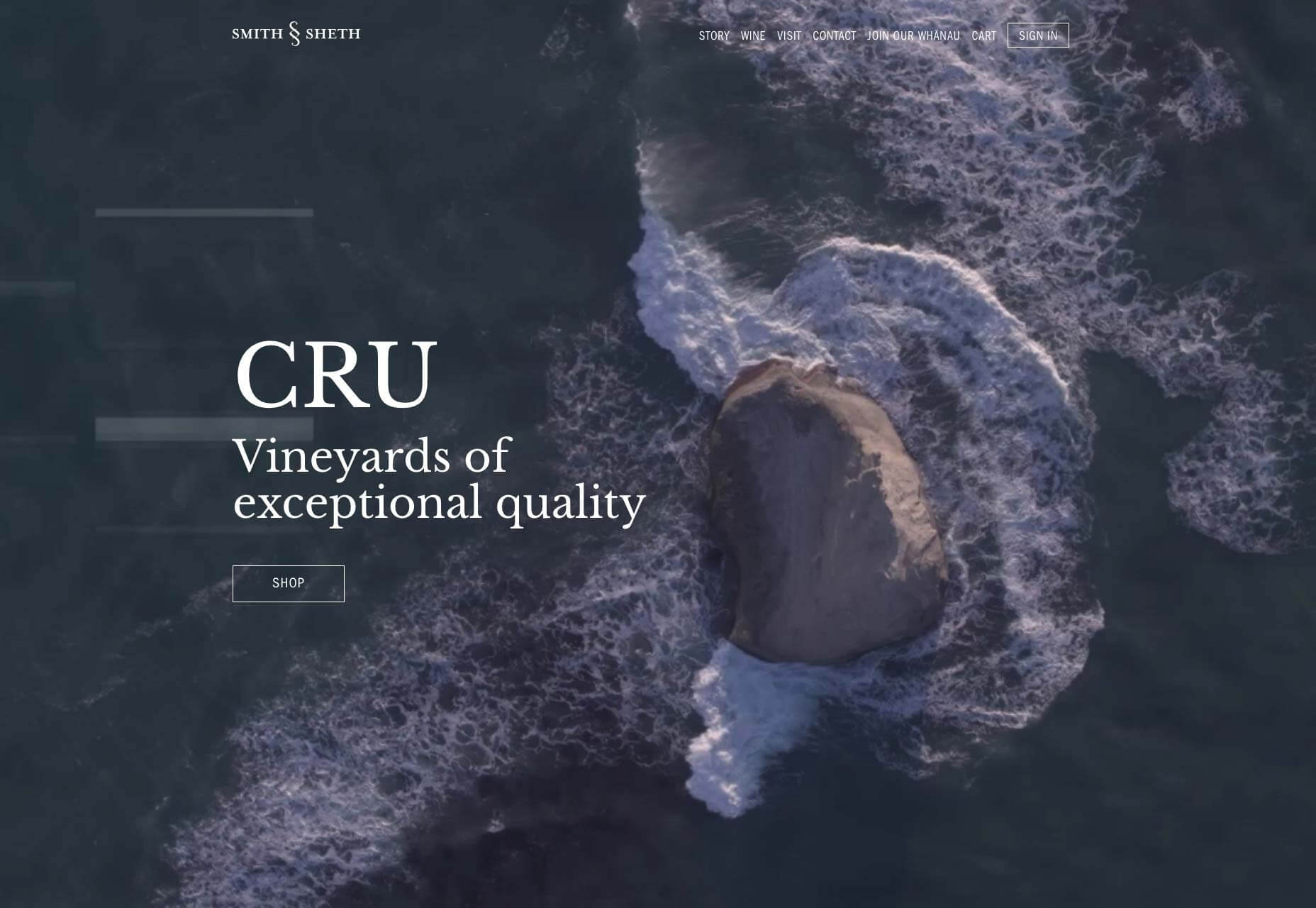How To Build A Narrative On Your Website

By Prebuilt Sites Team
December 21, 2022
Take a moment to think about websites that you’d say have the best content or what marketing campaign resonated with you the most. Whatever the answer may be, it likely resonated with you because it told a story that struck an emotional cord. Websites in particular can benefit by placing storytelling and narrative techniques at their heart: this allows an emotional connection where otherwise the user is just reading information on a screen. Building a narrative on your website by sharing stories that are authentic and inspired helps build trust with your readers and makes your business stand out among the rest. The best way to incorporate a narrative on your website is by sharing the company’s story and mission in a customer-focused way. Share the struggles that your business has overcome as well as customer stories of how your product or service has helped them overcome their struggles. Share the impact your brand has made on the community. You could even create a story and build a campaign around that. Keep reading to learn how to use these narrative techniques on your website. If you have any questions or want us to handle your website for you, reach out to us at Prebuilt Sites or The BBS Agency. We’d love to help you out!
When we look at the very best content, it’s almost always about telling a story: From memorable TV adverts that run like a romantic mini series to sophisticated modern content campaigns that draw on the user community for experiences, the straight narrative provides the kind of emotional connection that builds a great brand.
Websites in particular can benefit by placing storytelling and narrative techniques at their heart: this allows an emotional connection where otherwise the user is just reading information on a screen. If the organisation you are working with already has a strong brand story, or even their own marketing department, they will likely be full of ideas for compelling content to go on the site; but even if you’re working with a small local business or a start-up, you can help them by incorporating narrative techniques into their site and encouraging them to develop a story.
Building a narrative for the business or brand you are promoting elevates a website from shop window to company headquarters. It places the site at the centre of the business’ drive for customers, and can even help focus its own goals and direction. Naturally, narrative elements are an excellent way of incorporating text into a site for SEO and other purposes.
Everyone loves a story, so how can even basic sites incorporate narrative elements that ensure eyes stay on the page a little longer?
Stories that are authentic and inspired are arguably the most compelling and avoid the pitfalls associated with being caught out with a fake story, which, in these days of social media, can be fatal. And anyway, why look further? Most business were founded for a reason and their owners and staff are dedicated to what they do. Encourage them to look within, or just get them to tell their story and figure out how to present it.
Find the Company’s Story
How did the company start? What problems did the founders seek to address? The foundation myth remains as popular now as in the days of Romulus and Remus, and is equally effective for long-standing traditional brands as it is with alternative and ethical start-ups.
Swiss watchmakers and Belgian brewers love to advertise their medieval craft origins. On the other hand, new organisations can tap into a sense of excitement and entrepreneurship with genuine personal stories that make the founders the stars of the brand.
Traditionally this is done through the ‘about’ section, like popular eyewear brand Warby Parker. Or through a compelling series of blogs highlighting the founder’s passion for the cause, such as US recruitment start-up Zaphire, which has been highlighting owner Divan’s journey from Indian childhood to American entrepreneur.
Tap into the Community
Thanks to social media, it’s easier than ever to interact with a business’ customer base and draw out their stories. How do they use the product or service? How has the organisation improved their lives? There are many great examples of modern brands built entirely on what their customers say about them. Airbnb, the internet firm that links homeowners with space to rent and travellers needing a room, is nothing without these twin user bases. The company made their very human experiences of sharing a home into a compelling content campaign.
On a simpler level, a good set of client case studies fulfils the same function for a B2B targeted website. Case studies offer the twin benefits of illustrating the product or service and confirming success; they are great for SEO and potentially allow a business to do a bit of cross advertising or social media work with their clients. What’s not to like? A nice set of case studies is an easy way to improve a boring website that struggles for copy because the product or service is technical and business-oriented: it’s also an ideal up-sell for a web designer.
Get Sporty or Join the Struggle
Big brands piggyback on stories by buying into the success of a sports star or celebrity—that’s likely out of your client’s budget and beyond your scope as a web designer. However, if your client sponsors a local kids’ soccer team, that narrative is at least as powerful to their audience as anything Roger Federer can bring you, so get a page built and make sure it’s prominently displayed, with suitable pictures of the happy youngsters, and a few choice words to tell their story.
Recently big brands have also adopted a parallel tactic that be a great way to get your brand noticed, and that is to champion a cause. However, here authenticity really is key and only a real relationship will yield a viable story. Take Nike’s Equality campaign: it features women and athletes of colour. The site itself has evolved with the campaign: it originally featured a video telling the story of tennis star Serena Williams.
Source: Web Designer Depot
On the face of it, it seems a risky strategy—corporate America trying to piggyback on the fight for race and gender equality. But it works because Nike has built career-long relationships with athletes, and has a track record: its minute-long tribute to Michael Jordan on his retirement is still lauded as a masterpiece in storytelling as advert.
A cause-based approach will appeal to ethical businesses, and of course will be a natural fit to any charity’s website.
Just Tell a Tale
Despite the pitfalls, it is possible to simply promote a brand based on a fictional story. Providing this is clear, the approach is not ‘unauthentic’. In fact, if you do it well and build upon it, your brand can become strongly linked to the fictional characters you created. Take Swiss brand Nescafé’s Gold Blend couple: the adverts featuring a man and a woman gradually bonding and flirting over a cup of coffee were so popular in Britain in the 80s and 90s, that the company is still associated with them, and was able to revive the series years later to give its brand a boost.
Perhaps surprisingly in an age where authenticity is lauded and demanded, even fake foundation stories can be successful. On its menus, the restaurant chain Frankie & Benny’s carries a fictitious story of one of the eponymous founders leaving his native Sicily at the age of 10 and working in the family restaurant in New York’s Little Italy: arguably, this is just part of the chain’s cosy and family-friendly theme, and the tall tale doesn’t appear on the company website.
On the other hand, the clothing brand Hollister faced a bit of a consumer backlash after it became publicly known that John M Hollister was a made-up founder whose story supported the 1920s California-style branding. The brand—actually founded by parent company Abercrombie & Fitch in 2000—rode out the controversy but has gradually moved away from the story, and even the sepia tint to its photos has now gone.
If nothing dramatic is forthcoming, it is better to build a narrative website on relatively little. A sense of place can be enough: everyone comes from somewhere, and everywhere has a story. This gin distillery in the middle of Scottish whisky country has built a beautiful website based on the inspiring natural environment on its home island of Mull. It’s a good example of how narratives don’t have to be wordy: indeed, they can be very visual and fit in with the principles of modern minimalist website writing.
The Power of Storytelling
Perhaps it is not surprising that storytelling is such a powerful tool for marketing and brand building: humans have been described as ‘story-telling animals’, whose ability to build a compelling narrative has been instrumental in the rise of civilization. Primitive societies would have forged common bonds over campfire tales, and these gradually morphed into the epic tales that underpinned early religion and nationhood.
In the modern world, the Internet has very definitely supplanted the campfire, but people are still circling around looking for a tale to listen to. Sometimes, all you need is the narrative technique: This New Zealand winery’s award-winning website has all the elements you would associate with a standard approach, but is set up so that the visitor scrolls through a series of pictures and captions. Sometimes, it’s all in the telling…


